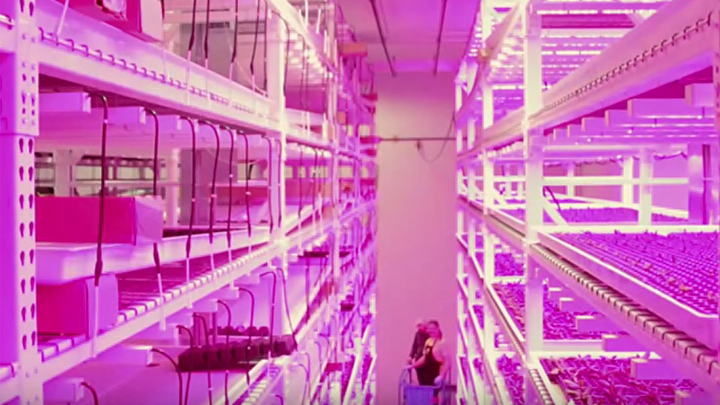There are a lot of crazy, high-concept ideas out there for skyscraper farms that would feed huge populations on just a few acres of land, but what does a real-life vertical farm look like these days? As part of a series on the future of food, the video series The Good Stuff went inside Green Sense Farms in Indiana to discover what this futuristic agricultural movement is all about. The filmmakers (including mental_floss YouTube host Craig Benzine) also visited Dickson Despommier, the man who pioneered the vertical farm concept, for a little history lesson.
The building looks pretty nondescript from the outside, but inside, the stacks of plants growing under specialized lights look straight out of a sci-fi movie about a post-apocalyptic society. That purple-pink glow you see (also seen in underground farming) comes from energy-efficient bulbs designed just for growing plants. Plants photosynthesize best in red and blue light, so the lights used in indoor farming produce only those wavelengths, instead of wasting money producing the full spectrum of light (as in white light).
Green Sense has several advantages over a horizontal farm. Not only does it produce more food in a denser area of land than a traditional farm, but the food it does produce can be harvested daily. Protected from weather and seasons, the climate-controlled farm can grow year round, and its crops won’t be wiped out by a particularly bad rainy season or a plague of pests.
But before you throw yourself onto the vertical farm bandwagon, know that farms like Green Sense are designed specifically to grow leafy greens. Growing oranges or wheat would require a whole new system, so it’s not likely that we’ll eliminate regular ol’ horizontal farms anytime soon.
[h/t: Digg]
